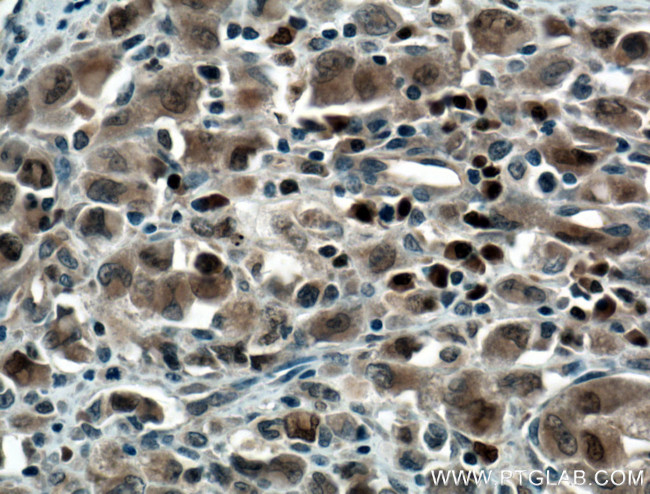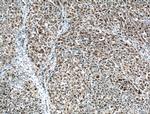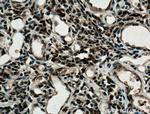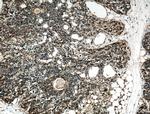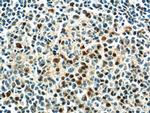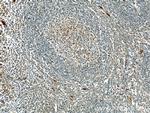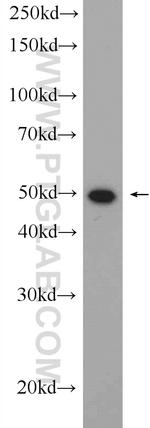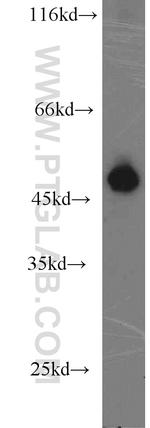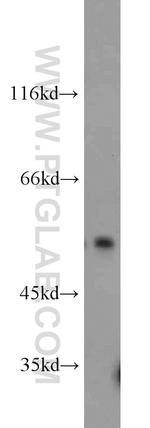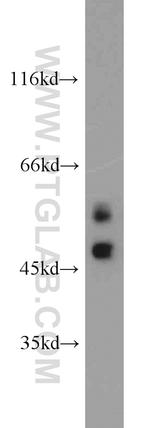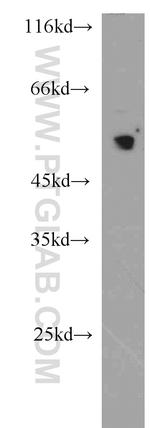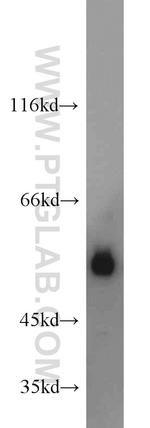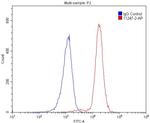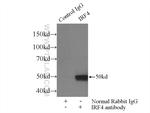Search Thermo Fisher Scientific
产品信息
11247-2-AP
种属反应
已发表种属
宿主/亚型
分类
类型
抗原
偶联物
形式
浓度
纯化类型
保存液
内含物
保存条件
运输条件
产品详细信息
Immunogen sequence: MNLEGGGRG GEFGMSAVSC GNGKLRQWLI DQIDSGKYPG LVWENEEKSI FRIPWKHAGK QDYNREEDAA LFKAWALFKG KFREGIDKPD PPTWKTRLRC ALNKSNDFEE LVERSQLDIS DPYKVYRIVP EGAKKGAKQL TLEDPQMSMS HPYTMTTPYP SLPAQQVHNY MMPPLDRSWR DYVPDQPHPE IPYQCPMTFG PRGHHWQGPA CENGCQVTGT FYACAPPESQ APGVPTEPSI RSAEALAFSD CRLHICLYYR EILVKELTTS SPEGCRISHG HTYDASNLDQ VLFPYPEDNG QRKNIEKLLS HLERGVVLWM APDGLYAKRL CQSRIYWDGP LALCNDRPNK LERDQTCKLF DTQQFLSELQ AFAHHGRSLP RFQVTLCFGE EFPDPQRQRK LITAHVEPLL ARQLYYFAQQ NSGHFLRGYD LPEHISNPED YHRSIRHSSI QE (1-451 aa encoded by BC015752)
靶标信息
The IRF (interferon regulatory factor) family of transcription factors are characterized by an unique tryptophan pentad repeat DNA-binding domain. The IRFs are important in the regulation of interferons in response to infection by virus, and in the regulation of interferon-inducible genes. IRF4 is lymphocyte specific and negatively regulates toll-like-receptor (TLR) signaling that is central to the activation of innate and adaptive immune systems. A chromosomal translocation involving this gene and the IgH locus, t(6;14)(p25;q32), may be a cause of multiple myeloma. Alternatively spliced transcript variants have been found.
仅用于科研。不用于诊断过程。未经明确授权不得转售。
生物信息学
蛋白别名: Interferon regulatory factor 4; IRF-4; LSIRF; Lymphocyte-specific interferon regulatory factor; Multiple myeloma oncogene 1; NF-EM5; PU.1 interaction partner; Sfpi1/PU.1 interaction partner; Transcriptional activator PIP
基因别名: AI385587; IRF-4; IRF4; LSIRF; MUM1; NF-EM5; SHEP8; Spip
UniProt ID: (Human) Q15306, (Mouse) Q64287
Entrez Gene ID: (Human) 3662, (Mouse) 16364

